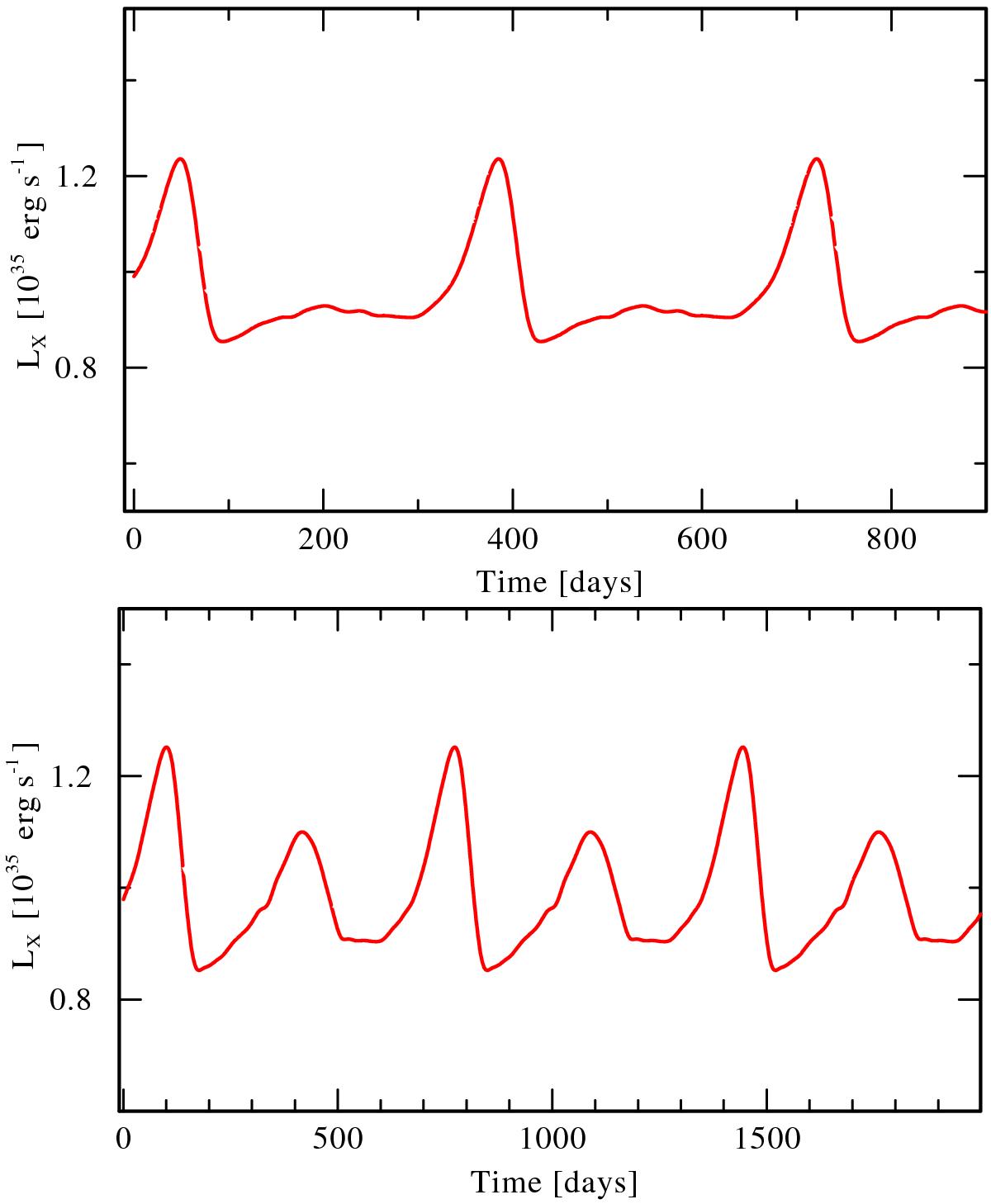Fig. 3

Top: same as Fig. 2 but assuming an orbital separation of 2.5 R∗, corresponding to an orbital period of ~10.6 days. As this is only slightly larger than the CIR period (~10.3 days), the super-orbital modulation occurs on a much longer time-scale (~330 days). Bottom: same as above but using two CIRs. The super-orbital modulation is now characterized by a double asymmetric peak repeating every ~660 days, corresponding to the fact that the NS is crossing two CIRs with different density/velocity contrasts along its orbit.
Current usage metrics show cumulative count of Article Views (full-text article views including HTML views, PDF and ePub downloads, according to the available data) and Abstracts Views on Vision4Press platform.
Data correspond to usage on the plateform after 2015. The current usage metrics is available 48-96 hours after online publication and is updated daily on week days.
Initial download of the metrics may take a while.




